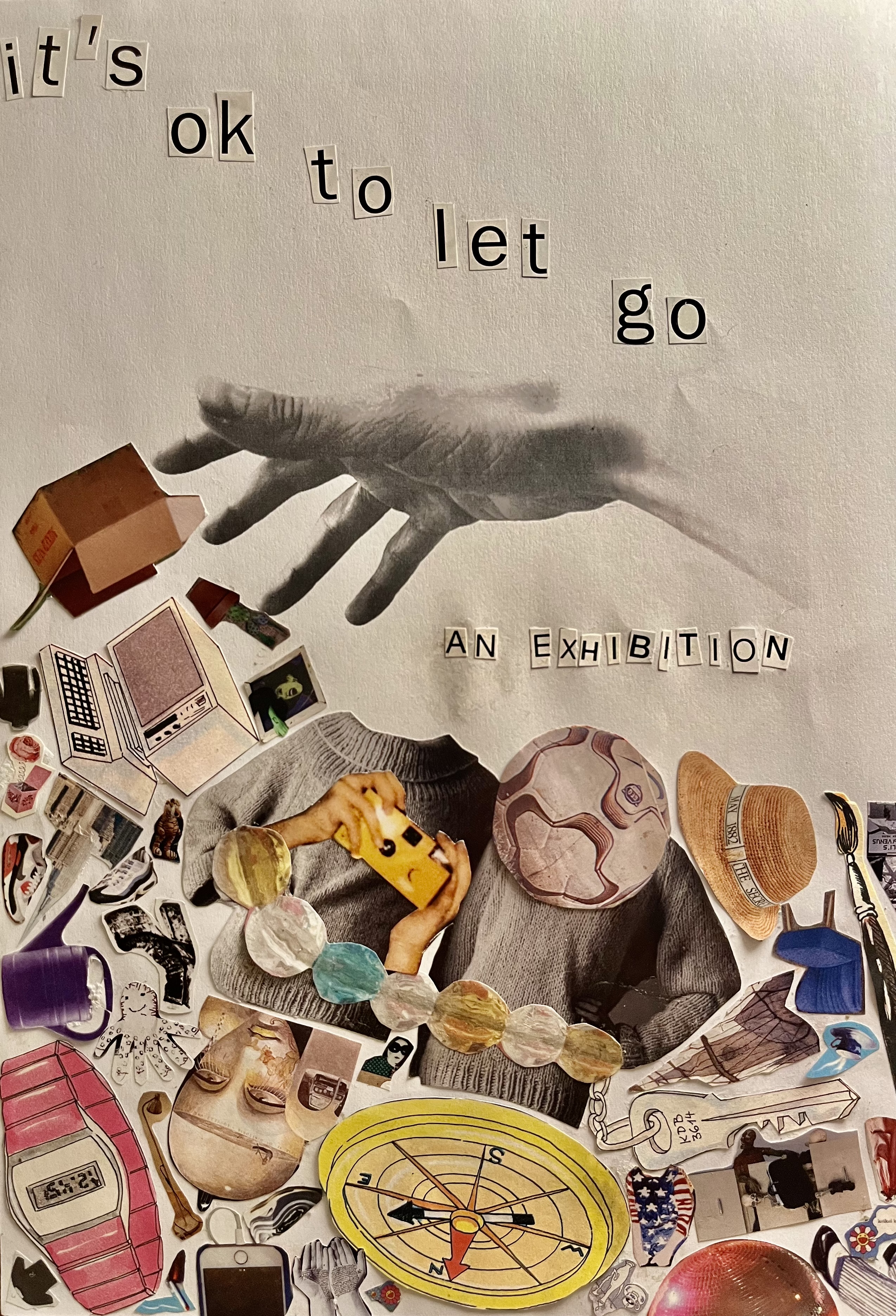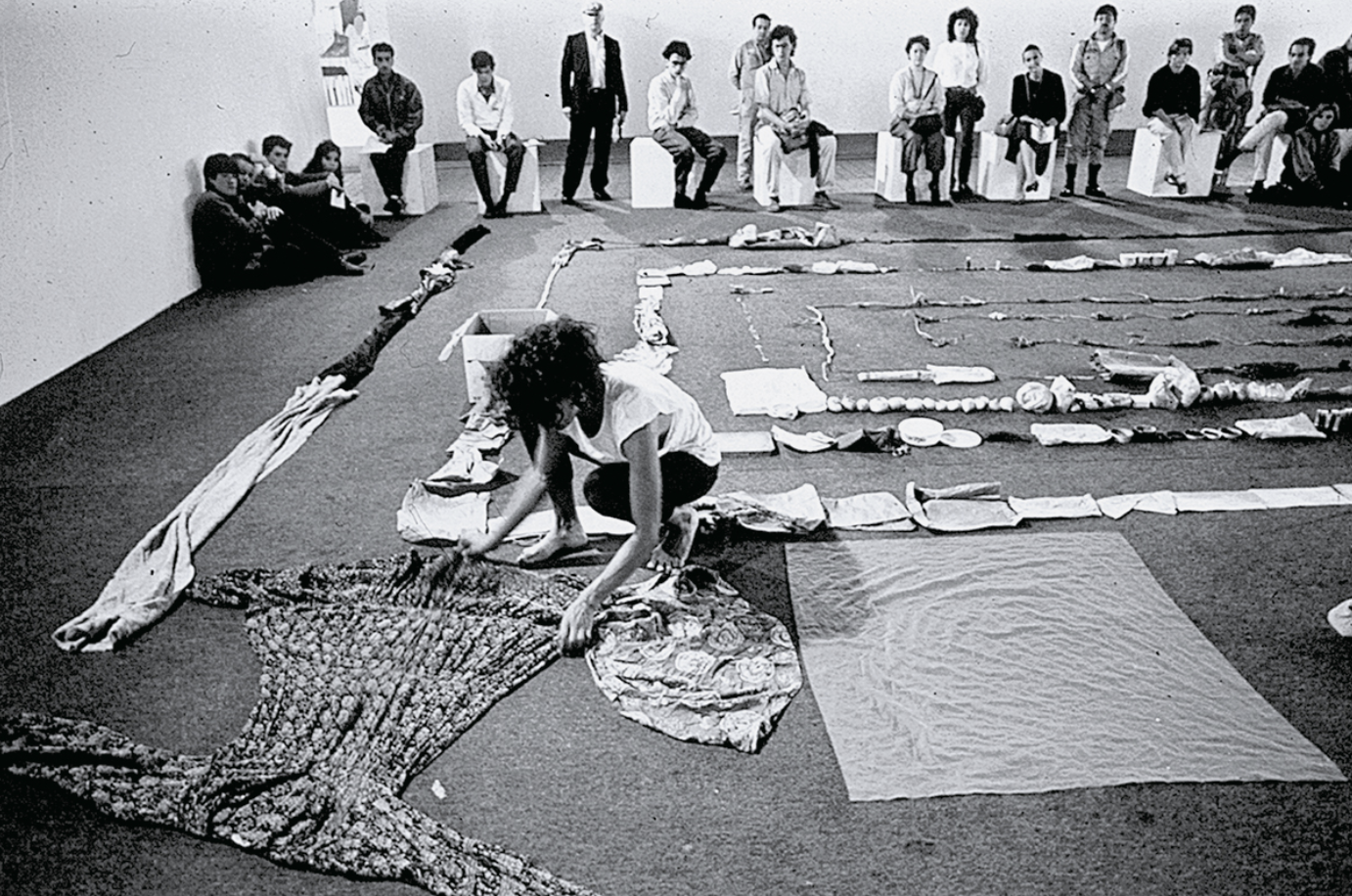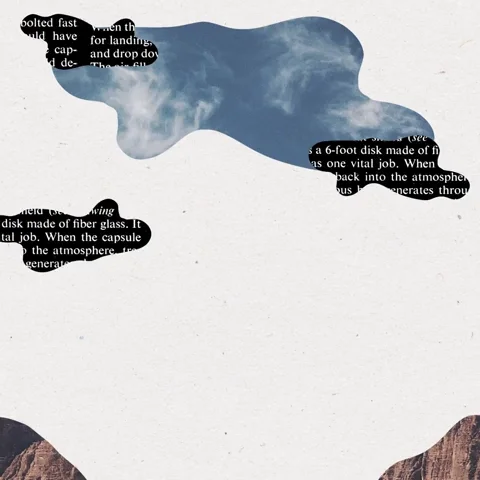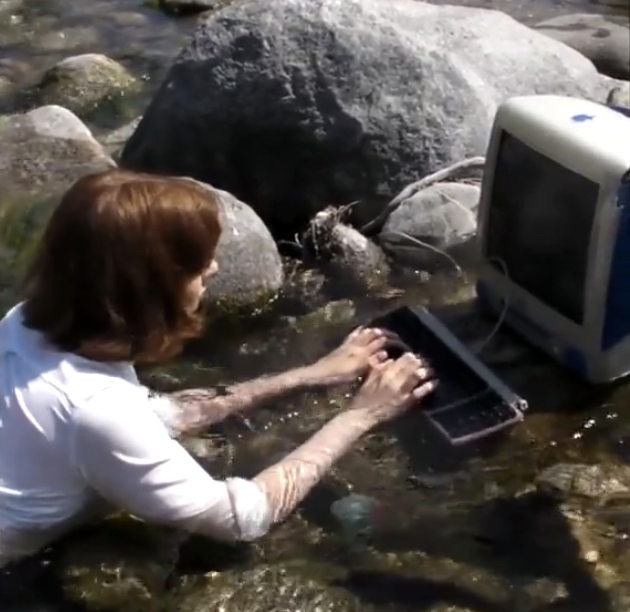It's Ok to Let Go: An Exhibition on Loss
Exploring the Art of Embracing Change

You made it – welcome!

ABOUT THE EXHIBITION:
It’s Ok to Let Go is an exhibition that exists everywhere and nowhere, which feels right given that I’ve been writing about ~Big Life Transitions~. So whether you’ve been following along or just randomly clicked on this page, I’m glad you’re here.
I created this exhibition because I’m in transition, which is a polite way of saying I’m not sure who I am or where my life is headed. Lately, I’ve been navigating goodbyes – to friends, a job, versions of myself that I’ve outgrown, all while trying not to do something rash like get bangs. Again.
So I made this exhibition about some art that’s helping me navigate this time. I even designed that poster. But before we go any further, please let go of any expectations you have about this virtual experience. This won’t be one of those online exhibitions that gives the illusion that you’re actually wandering through a gallery or seeing up-close brush strokes. We did enough of that a few years ago while banging pots and pans in our sweatpants, and I’m pretty sure we all know we’re just on Substack. Still, there’s a lot to learn from the artworks, even from behind a screen.
In fact, that’s the only way I’ve ever experienced them – online. I’ve never seen any of these pieces in person. Most were first exhibited when I was a kid. But even without seeing these works up close, they’ve left a lasting impression.
All of the works are about transition – breakdowns, breakthroughs, everything in between. The artists are wrestling with some of the same questions that I’ve been asking myself: what am I holding onto right now? What’s holding onto me? How do my belongings define me, and how do I define myself as I continue to evolve?
As you explore, I hope you find something that gives you comfort or clarity for whatever transition you find yourself in.
ROOM 1: TRACEY EMIN MAKES HER BED
Imagine – in as clear detail as possible – the lowest phase of your life. Where were you living? Was it a house, an apartment, a car? Who were you living with? Alone? With roommates? What did your bedroom look like? What color were your sheets? What about the pillows? What did it smell like in your room? Did you smoke there? Did you drink? Did you eat in bed? Did you take drugs? Did you fall asleep with the light on? Did you sleep at all? Who did you sleep with? How many people shared your bed? Were you alone? Were you scared or angry or ashamed? Was there a moment when you looked around and thought, I can’t keep living like this.
The artist Tracey Emin had such a moment. At age 35, after a difficult break-up, she spent four days in bed drinking, smoking and popping pills. When she got up, she looked at her bed – and she really saw it: the tangle of sheets, empty bottles, period-stained underwear, condom wrappers, cigarettes and ashes. It was a mess. But instead of clearing it away or sinking back in, Emin saw the bed and thought, I made that.

Tracey Emin’s My Bed (1998) Photo Credit: Richard Stonehouse / Stringer via Getty Images
She turned this difficult time into a work of art called My Bed, which exhibited at the Tate Gallery in 1998. It was raw, emotional and critics lost their minds. “Anyone could do that,” they said, to which Emin replied, “Well, they didn't, did they?” She also didn’t agree with the criticism that the bed was just a gimmick made for shock-value. “The bed isn’t shocking, you’re not supposed to be shocked by it,” she said in a 1999 interview with the The Los Angeles Times. “You’re supposed to relate to it, to say, ‘I’ve been there.’ Or, ‘I’ve never been there but can imagine.’ Or, ‘That’s Tracey.’”
When I look at pictures of My Bed, I’m reminded that this is the part of the transition that a lot of us want to ignore. We’re eager to glow-up with haircuts and a trip to IKEA, but it takes a certain kind of presence and mercy to acknowledge (and in a way honor) the messes we’ve made. Most of us won’t turn our unmade beds into multi-million dollar art – (Emin’s already beat us to that, selling her bed at a 2014 Christie’s auction for £2.54m) – but our beds, both literal and metaphorical, can transform us.
And that’s what makes My Bed so compelling. It’s a well-known piece but also one that evolves with time. At each exhibition, Emin rebuilds the scene, taking the cigarettes, empty bottles, dirty underwear and other remnants of her former life out of storage and arranging them by the bed that she literally remakes again, snuggling into the sheets that she says still smell like they did when that bed was the place she slept. The bed might be a portal to the past, but Emin isn’t the same person. As she said in an interview with The Tate Museum, “The things around the bed no longer relate to my life at all.” She says she doesn’t drink or smoke, doesn’t have sex or periods. She’s a different person with a time capsule of her old self. In that way, My Bed is not only a snapshot of a young woman’s breakdown but also a symbol of transformation.
ROOM 2: “IMAGINE NO POSSESSIONS”
Transitions – whether a move, the end of a relationship or an illness – usually require us to relinquish possessions. Over the last few weeks as I’ve tried to figure out my own life, I’ve let go of old clothes, returned my work computer, accidentally lost keys and a watch (what’s next, two cities, two rivers, a continent?). I remind myself that losing isn’t a disaster but a natural part of change, something one artist took to an extreme.
In the late 90s, Michael Landy was a young British artist when he came up with the idea for a piece he ended up calling Break Down. Over three years, Landy devised a plan to systematically destroy all of his possessions – all 7,227 items, ranging from postage stamps to his car to his birth certificate to family photos to his own artwork and that of other artists, including Tracey Emin. His aim was to strip away his life’s possessions in order to discover who he was without them.
In 2001, Landy carried out his plan over two weeks in a former C&A department store on London’s Oxford Street. The performance was open to the public, who watched Landy and the staff, dressed in blue overalls reminiscent of factory workers, as they methodically destroyed everything. In the documentary above, you can watch as the items are placed in what look like yellow TSA bins and run along a conveyor belt through a network of funnels, crushing machines, disposal bins . . . To the tune of Space Oddity, records are joyfully snapped in half. A jacket that Landy’s late father bought on credit is prepared to be torn to bits. It’s hard to watch. The whole scene looks a little like a nightmare version of Willy Wonka’s chocolate factory or maybe the worst place ever to lose your luggage. You can see the complexity of the operation in the video, but there are also hyper-detailed blueprints of the entire floor plan.
The most horrifying part of this documentary for me was when a grinning crew member cuts up Landy’s passport. It’s not like a passport is irreplaceable, but what made me uncomfortable was what the passport represented – identity and freedom, the power to leave. If you’re like me, the kind of person who jets off when life gets a little too tense, a passport isn’t just paperwork – it’s an escape. If I ever had to destroy my belongings, a passport would be one of the hardest things to let go. So of course, when I actually lost my passport this week, it felt like some kind of test. I have to accept, at least for now, that I no longer have a quick-fix escape. Losing it feels like a mini version of what Landy went through, stripping away the objects that defined him to find out what was beyond that. So that’s where I am now, stuck here with myself.
Watching Break Down, it’s hard not to see it as wasteful. Why not donate these items? But destruction, rather than donation, was essential to the project. Landy didn’t want to just pass on ownership but completely eviscerate ownership. The remains of his possessions were recycled or dumped into a landfill, and in the end, all he had were his overalls and a debt of £100,000 – what it cost him to destroy everything he owned.
When the job was done, Landy described it as "a huge rush,” saying in one interview, “I was on cloud 9 [...] I'd negated everything.” The first thing he did afterward was ride in one of the yellow trays that carried his stuff, placing himself into the very system that dismantled the objects in his life. Then he and his crew went dancing all night.
But it seems there was also a less euphoric side to this story. In 2021, reflecting back on the two weeks in the warehouse when anyone could come by and observe, Landy told The Guardian, “I have talked about it as the happiest two weeks of my life, but it was also like witnessing my own funeral. People would come along who I hadn’t seen for years, and then I worked it out: I was only seeing them because I’d in a sense died.”
At one point, Landy’s mother came in crying and he had to take her out of the warehouse. This moment shows how change, while exhilarating, can also be unsettling, especially for people close to us. Tracey Emin faced a similar tension when she first exhibited My Bed saying, “It’s ok if complete strangers look at it, but the fact that my family and people close to me might find it repugnant and repulsive . . .” She trails off, but the end of that thought might be that it’s not easy to carry judgment. As we change, we’re dealing with our own emotions and also navigating the feelings that others have about our transformations.
Even so, there’s something to be said for sticking with a change even when doubt creeps in. Twenty years on, the emptiness and destruction that Break Down brought about doesn’t seem to haunt Michael Landy. Instead, he says he doesn’t have any regrets about the project. As he told The Guardian in 2021, “I don’t miss a thing.”
ROOM 3: A THING IS A THING
If the trick to evolving in life was just about letting go, that would be too neat. So before we continue into this exhibition, let go of the idea that It’s Ok to Let Go is all about release. The truth is, it’s also about knowing when to hold on during a transition and what to carry forward into the next phase.

María Teresa Hincapié. Una Cosa es Una Cosa (1990)
One person who captured this process of holding on and letting go was Colombian artist María Teresa Hincapié, who spent years experimenting with performances about daily, often mundane rituals and how they define identity. In 1990, she won first prize at the XXXIII Salon of Colombian Artists for her piece Una Cosa es Una Cosa (A Thing is a Thing), in which she spent eight hours a day for 10 days in the Bogotá Museum of Modern Art, arranging and rearranging objects from her life – pots, plates, clothing, toiletries. In silence, she placed the items in a kind of labyrinth of small and large squares around her. Moving items around was a meditation on the rhythms of daily life. It also reflected the ebb and flow of introspection, where returning to the same objects and places can bring insights and clarity.
In 2020 – thirty years after Hincapié’s performance – my good friend, the artist Eliana Araque, created a reinterpretation of the work titled . . . Y Otra Cosa es Otra Cosa (And Another Thing is Another Thing). In the piece, she arranged her personal belongings in a spiral, a symbol of continuity and change. Her performance was a way to take inventory of her possessions and reflect on the roles she was playing – both chosen and imposed – and how those roles were taking up space in her life.
Eliana Araque. . . . Y Otra Cosa Es Otra Cosa (2020)
The performance was streamed over Youtube because of pandemic restrictions, which gave it a sense of distance that I’ve experienced in all of these works. While we can never really know what objects mean to others, even from a distance we can feel the weight of identity and importance these objects carry. We experience the discomfort and awe of watching someone lay out their life and wonder if we could do the same.
And these artists aren’t just letting go of their possessions; they’re also surrendering control over what their lives and personal chaos might look like to the world. Each object is a fragment of a larger story. The soft stuffed animal at the heart of a breakup scene, the hard-earned coat of a relative cut to bits, a woman navigating an endless labyrinth of pots and pans, a skyline of nail polishes rising up from a spiral that’s both carefully constructed and also a little untidy, because the story isn’t over yet.
PROCEED TO THE REST OF THE EXHIBITION
The artists we’ve seen all approach letting go in different ways - through self-display, destruction and taking inventory. But in each work, the art serves as a kind of mirror, reflecting who the artist was at that moment in time.
As I’ve been going through my experience, peeling back layers and getting rid of things, I’ve found myself facing my own kind of mirror – and what I see is a lot of discomfort and grief. Because change is lonely. The kind of lonely you might feel when you pull yourself together to go to a museum where you’re suddenly surrounded by strangers – friends, couples, parents and kids. Looking around, it can feel like everyone else knows where they’re going and where they belong.
But here’s the thing: you’re not alone. Even when it feels like you are, you’re not. There are so many people dealing with doubt and uncertainty. Society doesn’t tell us how to navigate transitions. We’re not even really supposed to talk about them. We’re just told to stay busy and never have a gap on our resumes. But what these artworks suggest is that to truly move through our transitions and become who we’re meant to be, we actually need to slow down. We need room to engage with uncomfortable emotions, to sit with uncertainty and even find enjoyment and fun along the way.
More on how to do that in an upcoming piece.
Until then.

David Da Cruz via Giphy



